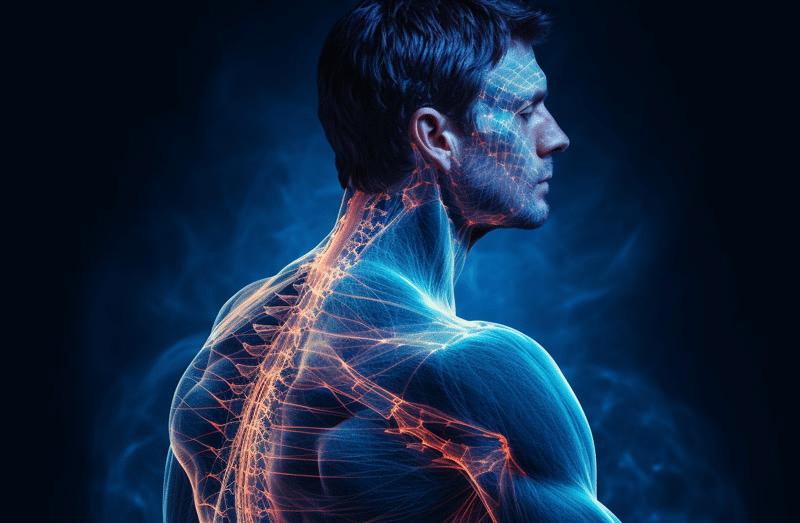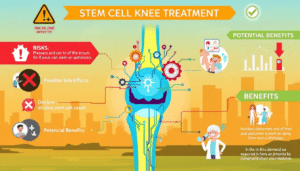In the world of medical advancements, getting a stem cell injection for your shoulder is like stepping into the future of healing. This cutting-edge method uses the power of stem cells, taken from your own body or purchased from a medical lab, to tackle various shoulder problems and injuries.
From pesky issues like rotator cuff injuries to dealing with arthritis or just everyday wear and tear, these injections offer a way to ease shoulder pain without surgery. It’s a hopeful option for folks looking for a non-surgical route to better shoulder health and recovery. Let’s dive into how these injections could make a real difference for your shoulders.
What are Stem Cells?

Stem cells are like the body’s versatile building blocks. They’re special cells that can turn into different types of cells in our bodies. Unlike regular cells with specific jobs, stem cells can divide and create more of themselves or change into specific cells.
This unique ability helps with growth, fixing tissues, and keeping our bodies in good shape. Stem cells can come from different places, like embryos (embryonic stem cells) or adult tissues (adult or somatic stem cells). Each type has its strengths and can be used in different ways to help our bodies heal and stay healthy.
What are Stem Cell Injections?
Stem cell injections involve introducing stem cells into a specific area of the body, harnessing their unique ability to transform into different cell types. This innovative approach aims to promote healing and regeneration in damaged or injured tissues.
These injections can use various types of stem cells, such as those derived from bone marrow, adipose tissue, or other sources. The injected stem cells can integrate with the existing cells at the targeted site, contributing to tissue repair and potentially alleviating symptoms or improving overall function. Stem cell injections represent a promising frontier in medical treatments, exploring the body
An Overview of Stem Cell Rotator Cuff Repair
Exploring the potential of stem cells in repairing a rotator cuff offers an innovative approach to addressing shoulder injuries. Stem cell therapy, a groundbreaking field in regenerative medicine, taps into the body’s natural healing capabilities by using stem cells, often sourced from the patient’s own body.
In the context of rotator cuff repair, this method aims to promote tissue regeneration, reduce inflammation, and enhance the healing process. By harnessing the regenerative power of stem cells, the treatment seeks to provide a non-surgical option for individuals dealing with rotator cuff issues, paving the way for a more effective and personalized approach to shoulder recovery.
Using healing agents from the patient’s own body to treat shoulder arthritis, rotator cuff tears, and other common shoulder conditions, stem cell therapy provides an alternative to invasive surgeries like rotator cuff tear surgery, shoulder labrum surgery, acromioplasty, and shoulder replacement. Traditional treatments for a torn rotator cuff include rest, cortisone injections, and medications.
The Novel Nature of Stem Cell Treatment for Rotator Cuff Repair
Stem cell injections hold promise for repairing and rejuvenating the damaged rotator cuff tendon, offering a cutting-edge approach to shoulder rehabilitation.
Autologous stem cells may have a natural ability to help the body with both healing and regeneration. This form of regenerative medicine is considered a safe and effective treatment. Additionally, you don’t have to worry about the ethical concerns associated with fetal stem cells since adult stem cells are harvested directly from the patient’s body or in a lab.
These cells encourage standard growth factors and may accelerate healing in the body, eliminating patients suffering from damaged rotator cuff or shoulder blade injuries.
What Causes Shoulder Pain?
Shoulder pain can stem from various causes, ranging from injuries to underlying medical conditions. Understanding the root of shoulder pain is crucial for accurate diagnosis and effective treatment. Here’s an in-depth exploration of the common causes of shoulder pain:
Rotator Cuff Injuries: The rotator cuff is a group of tendons and muscles surrounding the shoulder joint, and injuries to these structures are a leading cause of shoulder rotator cuff pain. Overuse, traumatic injuries, and age-related degeneration can contribute to rotator cuff tears or inflammation.
Tendonitis and Bursitis: Inflammation of tendons (tendonitis) or bursae (bursitis) in the shoulder can result in pain and restricted movement. Repetitive overhead motions, aging, or direct injuries can lead to inflammation in these crucial shoulder structures.
Arthritis: Various forms of arthritis, including osteoarthritis and rheumatoid arthritis, can affect the shoulder joint, causing pain and stiffness. Degeneration of joint cartilage (osteoarthritis) or autoimmune responses (rheumatoid arthritis) contribute to shoulder arthritis.
Shoulder Impingement Syndrome: SIS occurs when a rotator cuff tendon gets pinched between the bones of the shoulder, causing pain or inflammation. Overuse of the rotator cuff, especially in activities involving overhead arm movements, can lead to impingement.
Frozen Shoulder: A condition characterized by the gradual loss of shoulder movement and persistent pain. The exact cause is unclear, but certain factors such as diabetes, previous shoulder injuries, or prolonged immobility may contribute.
Instability or Dislocation: Dislocation happens when the humerus bone is forced out of its socket, causing acute pain. Traumatic injuries, falls, or repetitive strain can lead to shoulder instability and dislocations.
Fractures: Fractures in the collarbone (clavicle) or upper arm bone (humerus) can result in significant shoulder pain. Accidents, falls, or direct impacts can lead to fractures.
Referred Pain: Conditions such as gallbladder disease or heart issues may cause pain that is felt in the shoulder. Nerve pathways can transmit pain signals from internal organs to the shoulder region.
Understanding these diverse causes helps healthcare professionals tailor interventions for individuals experiencing shoulder pain. Proper diagnosis and a targeted approach to treatment can significantly alleviate discomfort and improve shoulder function.
What Causes Rotator Cuff Tears?

Rotator cuff tears can occur due to a variety of factors, each contributing to the overall vulnerability of the shoulder’s intricate structure.
Age-Related Degeneration: As individuals age, the tendons of the rotator cuff can undergo degenerative changes, making them more susceptible to tears. This natural wear and tear process can weaken the tendon fibers over time.
Overuse and Repetitive Motion: Activities that involve repetitive overhead arm movements, common in certain professions or sports, can lead to overuse injuries. These repetitive motions may gradually wear down the rotator cuff tendons, increasing the risk of tears.
Traumatic Injuries: Sudden, forceful impacts or injuries, such as falls, dislocations, or direct blows to the shoulder, can cause immediate tears in the rotator cuff. These traumatic events can result in partial or complete tears depending on the severity.
Muscle Imbalance: Imbalances in the muscles surrounding the shoulder joint can place uneven stress on the rotator cuff tendons. Weakness or tightness in specific muscles may alter the mechanics of the shoulder, contributing to tears over time.
Poor Vascular Supply: The blood supply to the tendons decreases with age, impairing the body’s natural healing processes. This reduced vascular supply makes the rotator cuff more prone to injuries and slower to recover.
Exploring Stem Cell Injection for Shoulder Injuries

Shoulder injuries, encompassing a range of conditions from rotator cuff tears to osteoarthritis, often pose significant challenges to mobility and quality of life. In the pursuit of innovative therapeutic solutions, stem cell injection emerges as a promising frontier. Stem cells, particularly sourced from the patient’s own body, hold remarkable regenerative capabilities. These cells have the potential to differentiate into various tissue types, fostering healing and repair.
The process typically involves harvesting stem cells, often from bone marrow or adipose tissue, and then injecting them directly into the affected shoulder area. This targeted approach aims to address the root cause of the injury, promoting tissue regeneration and dampening inflammation. Stem cell therapy is gaining attention for its minimally invasive nature compared to traditional treatments, offering a potential paradigm shift in shoulder injury management.
One of the primary advantages of stem cell injections lies in their ability to modulate the immune response and stimulate local healing mechanisms. This not only aids in repairing damaged tissues but also holds the potential to slow down the progression of degenerative conditions. Additionally, as the therapy utilizes the patient’s cells, the risk of rejection or adverse reactions is minimized.
Stem Cell Therapy May Help Your Shoulder Injury Heal
While the field is still evolving, early studies and clinical experiences show promising outcomes. Patients undergoing stem cell therapy for shoulder injuries report improved pain levels, increased range of motion, and enhanced overall function. As research continues, this regenerative approach could revolutionize how we approach and treat a spectrum of shoulder ailments.
However, it’s crucial to note that the efficacy of stem cell therapy may vary among individuals, and more extensive research and clinical trials are needed to establish its long-term benefits conclusively. As we navigate this exciting frontier in medicine, the potential for stem cell injection to reshape the landscape of shoulder injury treatment remains a subject of ongoing exploration.
Exploring Stem Cell Treatment for Rotator Cuff Repair

Stem cell treatment for rotator cuff injuries introduces an innovative therapeutic approach, harnessing the body’s natural regenerative capabilities to address damage in the crucial shoulder joint component, the rotator cuff. Stem cells, typically sourced from the patient’s bone marrow or adipose tissue, are extracted through a minimally invasive procedure.
After extraction, these unique cells, capable of differentiating into various cell types, including those in tendons and ligaments, undergo careful processing and concentration. The concentrated stem cell solution is then precisely injected into the injured rotator cuff area.
The therapeutic potential lies in the stem cells’ ability to promote tissue repair, reduce inflammation, and encourage regeneration. Stem cell treatment for rotator cuff injuries is considered for those with persistent shoulder pain, limited range of motion, or related symptoms. While ongoing research aims to validate the efficacy of this approach, early findings suggest promise as a regenerative alternative to traditional treatments or surgery.
The evolving field of regenerative medicine, including stem cell therapy, necessitates continuous exploration. As studies progress, a clearer understanding of the treatment’s effectiveness will emerge. Individuals contemplating this therapy should consult their healthcare provider for suitability and stay informed about the latest research findings in the field.
How are Stem Cell Injections Performed?

Stem cell injections involve a minimally invasive procedure designed to harness the therapeutic potential of stem cells for various medical conditions, including orthopedic issues like rotator cuff injuries. The process typically follows these key steps:
Patient Assessment: Before the procedure, a thorough assessment of the patient’s health, medical history, and the specific condition being treated is conducted. This helps determine the suitability of stem cell therapy.
Stem Cell Source: Stem cells can be derived from different sources, such as bone marrow or adipose (fat) tissue. The chosen source depends on the patient’s condition and the physician’s recommendation.
Extraction: In a minor outpatient procedure, the selected stem cells are harvested from the patient’s body, or ones purchased from a lab, may be injected into the body. For bone marrow extraction, a needle is usually inserted into the pelvic bone, while adipose-derived stem cells are obtained through liposuction.
Processing: The harvested stem cells are then processed to isolate and concentrate them. This step is crucial for obtaining a potent solution rich in regenerative cells.
Injection: The concentrated stem cell solution is injected directly into the targeted area, such as the damaged region of the rotator cuff. This is often done using guidance techniques like ultrasound or fluoroscopy to ensure precision.
Healing Process: Once injected, the stem cells work by promoting tissue repair, reducing inflammation, and stimulating the body’s natural regenerative processes. Over time, the hope is that the injected stem cells contribute to the healing and restoration of the affected area.
Stem cell injections are valued for their minimally invasive nature and the potential to support the body’s natural healing mechanisms. While research is ongoing to fully understand the effectiveness of this treatment, it represents a promising avenue for individuals seeking alternative approaches to address conditions like rotator cuff injuries.
As with any medical procedure, individuals considering stem cell injections should consult with their healthcare provider to ensure it aligns with their specific health needs and goals.
What Are Common Treatment Options for a Rotator Cuff Tear?

Rotator cuff injuries can vary in severity, and treatment options are tailored to individual cases. Here’s a detailed overview of common treatments for a torn rotator cuff:
Physical Therapy & Massage Therapy
Tailored exercises are designed to strengthen the muscles surrounding the shoulder, improve the range of motion, and promote the healing of a rotator cuff injury. Physical therapy for a torn rotator cuff plays a crucial role in rehabilitation, addressing specific weaknesses and enhancing overall shoulder function.
Anti-Inflammatory Drugs & Corticosteroid Injections
Nonsteroidal anti-inflammatory drugs (NSAIDs), such as ibuprofen, are commonly prescribed to manage pain and reduce inflammation associated with rotator cuff injuries. These medications provide symptomatic relief and contribute to the overall treatment plan for addressing rotator cuff tears and rotator cuff injuries.
Corticosteroid injections, also known as cortisone injections, are a common intervention to alleviate pain and inflammation in the shoulder joint. Administered directly into the affected area, these injections provide temporary relief and can be part of a comprehensive treatment strategy.
Rest and Activity Modification
Adequate rest, along with modifications in daily activities and movements, is essential for the natural healing of a rotator cuff injury. Avoiding activities that strain the shoulder allows the damaged tissues to recover and reduces the risk of further complications from a torn rotator cuff.
Ultrasound-Guided Interventions
Procedures guided by ultrasound, such as needling or lavage, target specific damaged tissues within the rotator cuff. These interventions aim to address the root cause of the injury and promote healing under the guidance of advanced imaging techniques which allow doctors to see rotator cuff tears and address them further.
Stem Cell Injections
Stem cell therapy utilizes the regenerative potential of stem cells to repair damaged tissues in the rotator cuff. This advanced treatment focuses on promoting the body’s natural healing mechanisms. As stated above, stem cell therapy shows promise in treating rotator cuff tear injuries and shoulder join pain.
Stem cell therapy has shown great promise in treating torn rotator cuff injuries by activating natural healing agents found in the human body. Before considering rotator cuff surgery, many patients looking for rotator cuff repairs may choose stem cell treatment, as it is much less costly and may address the issue without surgical intervention.
Can Stem Cell Therapy Help Your Shoulder Pain?

Stem cell therapy shows promise in alleviating shoulder pain by harnessing the regenerative potential of stem cells. The procedure involves injecting stem cells, often derived from the patient’s own body, into the damaged shoulder tissues. These cells may have the capacity to differentiate into various cell types, promoting tissue repair and regeneration.
While research on the efficacy of stem cell therapy for shoulder pain is ongoing, some studies suggest positive outcomes, including reduced inflammation and improved function. However, more extensive clinical trials are needed to establish its effectiveness conclusively. Patients considering stem cell therapy should consult with healthcare providers for informed decision-making.
Stem Cell Shoulder Pain FAQs
What is stem cell injection for shoulder pain? Stem cell injection for shoulder pain involves the introduction of stem cells, often derived from the patient’s body, into the affected shoulder tissues to promote healing and regeneration.
How do stem cells work in treating shoulder injuries? Stem cells have the unique ability to differentiate into various cell types, contributing to tissue repair and regeneration in the damaged shoulder, potentially reducing pain, and improving function.
Is stem cell therapy for shoulders safe? Current research suggests that stem cell therapy for shoulders is generally safe, especially when using the patient’s own cells. However, it’s essential to consult with healthcare providers for personalized advice about bone and muscle tear injuries.
Book An Appointment for Stem Cell Therapy Today

Struggling with shoulder pain or injuries? Consider the revolutionary potential of stem cell injections for shoulder rejuvenation. If you’re seeking alternatives to conventional treatments or exploring regenerative options for shoulder issues, Stem Cells LA is here for you.
Contact us to schedule a personalized consultation and learn about the transformative benefits of stem cell therapy for the shoulder. Take the proactive step towards improved shoulder function and reduced pain through the regenerative power of stem cells. Explore the possibilities of a more comfortable and mobile shoulder with advanced stem cell treatments to accelerate healing.
Contact Information:
???? Call or Text: 310-281-6160
???? Visit Us:
1970 S. Prospect Ave. Suite 2
Redondo Beach, CA 90277


